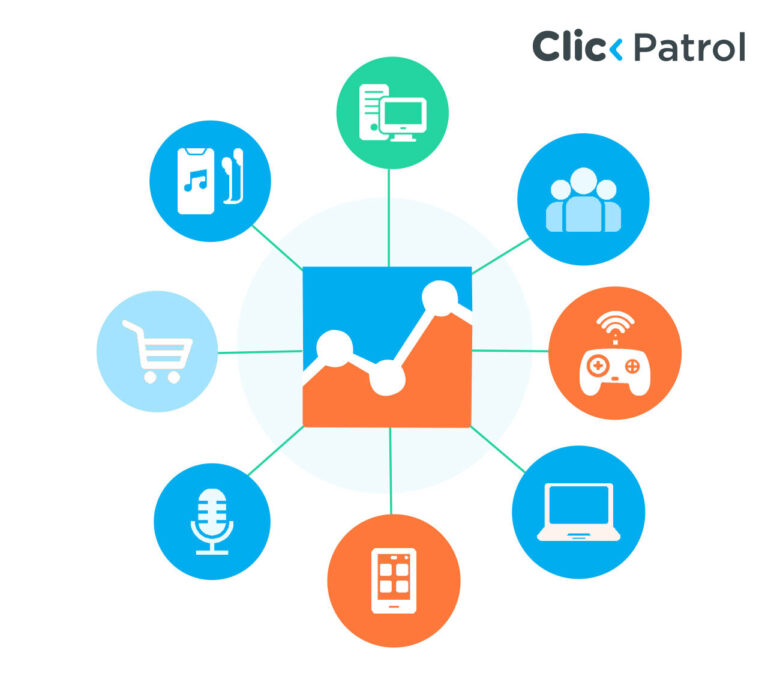
The Best Guide to Click Fraud Detection
Abisola Tanzako | Oct 11, 2024

Table of Contents
Pay-per-click advertising has become increasingly common due to digital advertising; however, click fraud poses a concern in line with this growing popularity. Click fraud occurs due to fake clicks on online ads, usually carried out by competitors, malicious individuals, or automated bots to waste advertising budgets, lower the quality of the ads, or generate revenue for publishers through pay-per-click (PPC).
Ad fraud losses were predicted to rise from 88 billion to 172 billion U.S. dollars between 2023 and 2028 due to the widespread prevalence of click fraud and fake clicks. Businesses are increasingly concerned about click fraud due to the significant losses it causes. They need to understand what fake clicks are and how it affects their ad campaigns. This article will act as a guide to help detect click fraud and offer ways to prevent it.
Understanding click fraud
Click fraud occurs when an individual intentionally clicks on a web ad without interest in purchasing or exploring its content. These malicious activities can be carried out through automated programs, bots or click farms, or competitors interested in depleting an advertiser’s budget or manipulating competition.
Forms of click fraud/fake clicks
Click fraud can take various forms, depending on the scam’s perpetrators and motives. These are some of the types of click fraud:
- Competitor click fraud: This means clicking on a competitor’s online ad intentionally, either by people or bots, with a clear view to exhausting the competitor’s ad budget. This action leads to massive losses and can manipulate advertising campaigns.It can also inflate costs without generating conversion to the ad. Pay-per-click (PPC) platforms, such as Google Ads and Bing Ads, or social network-based ad systems like Facebook and Instagram, are among the most prominent targets for such fake clicks.
- Publisher click fraud: Publishers can also commit fraud by clicking on display ads to make extra money. Since they are paid per click, inflating click counts of ads hosted on their sites means more payouts, even if the traffic is illegitimate.
- Botnet click fraud: A botnet is a network of automated bots comprising codes controlled remotely by a command and control (C&C) center. Organized criminals use botnets to generate large amounts of bot traffic and engage in widespread click fraud.
- Click farms are commercial enterprises in which many people are employed to click on ads repeatedly to inflate traffic or engagement artificially.
Impact of click fraud
Click fraud can have wide-ranging effects on businesses. Some of these impacts include;
- Wasted budget: every fraudulent click eats away part of your budget, leaving you with less money to spend on genuine engagements.
- Skewed analytics: fraudulent clicks can distort the campaign analytics because the advertiser cannot know the accurate picture of how the campaign is fairing.
- Reduced campaign performance: when click fraud drains the ad budget, the ad might stop before the intended period. This could lead to low visibility because the ad might not reach the target audience.
Signs of click fraud
Fake clicks can significantly undermine the effectiveness of online advertising campaigns. Recognizing the signs of click fraud is crucial for businesses to protect their marketing investments and ensure accurate performance measurement.
- High click-through rate: A sudden increase in clicks with no corresponding conversions might indicate fraud.
- Frequent clicks from one IP address: A typical red flag in click fraud detection is numerous clicks originating from one IP address, especially within a short period.
- Low session duration and bounce rate: Usually, genuine visitors to a website tend to stay a bit longer on the site after clicking on an ad; however, when there is a spike in visitors leaving the site immediately after clicking on an ad, it could signal bot activities.
- A sudden spike in foreign clicks: A sudden increase in clicks from areas not targeted by the ad campaign could signify click fraud.
- Odd traffic patterns: Clicks at regular intervals or odd times could signify the presence of bot activities.
How to detect click fraud
Detecting click fraud involves several strategies to identify unusual patterns and behaviors in your advertising metrics. Here are some effective methods to consider:
- Monitor traffic patterns: Advertisers need to monitor the website’s traffic pattern to detect click fraud. An unusual spike in traffic without a corresponding increase in conversion could signify click fraud.
- Track IP address: Advertisers should track clicks’ IP addresses to detect fraud. An unusual spike in clicks from the same IP address at a particular time could signify click fraud. Also, there is usually a database of IP addresses that have been flagged for perpetuating click fraud, so if clicks are carried out using those addresses, they can be flagged as fraudulent clicks.
- Geotargeting: Analyzing the geographic location of clicks can also be used to detect click fraud. A sudden increase in clicks from areas not targeted by the ad could indicate click fraud activities.
- Analyze click timestamps: Clicks occurring at odd times and in close succession could indicate click fraud. Non-human clicks usually happen in a pattern completely different from human clicks, so when this unusual pattern is noticed, it could signify click fraud.
- Browser and device versions: the types of devices used by visitors and browser versions can be used to identify suspicious patterns. For example, if several clicks originate from obsolete devices or outdated browsers, it could signify non-human traffic.
- Click fraud detection tools: Reassuring click fraud detection tools helps businesses and advertisers safeguard advertising budgets by identifying and preventing fraudulent clicks. An example of such a tool is ClickPatrol, Which provides an effective solution for fighting click fraud, which remains a huge problem in the digital marketing industry. ClickPatrol uses sophisticated AI algorithms to track and analyze click patterns. The ClickPatrol platform is designed to overcome the weaknesses of other click fraud protection software by implementing a more practical approach to the problem of click fraud. Click Patrol detects click fraud and blocks fraudulent clicks using its unique algorithm. Google also uses several strategies to prevent click fraud. Its automatic system recognizes and filters out fake clicks on Google Ads using Google’s algorithms.
Best practices for click fraud prevention
When click fraud has been effectively detected, the next most important step is click fraud detection. Below are some measures that can be used to prevent click fraud:
- IP exclusions: After specific IP addresses are confirmed to be used for click fraud, they are immediately excluded from the website. Clicks originating from those IP addresses are either flagged or ignored.
- Implement CAPTCHAS: Most fake clicks are carried out by bots; therefore, implementing CAPTCHAS on a website can prevent fake clicks. A challenge-response test called CAPTCHA is commonly used on websites to determine whether a user is human. Presenting these easy-to-complete tasks, which humans find easy but bots find difficult, adds more security to these websites.
- Monitor campaign metrics regularly: Businesses need to regularly monitor the key performance indicators (KPIs) of their advertisements, including click-through rates, bounce rates, and conversion rates. Monitoring these rates is crucial for detecting click fraud. Abnormal fluctuations in these rates can signify click fraud activity, allowing businesses to address these concerns before they escalate.
- Use negative keywords. Negative keywords ensure that ads are only shown to audiences genuinely interested in the products or services advertised.
Key takeaways on click fraud detection
The threat of click fraud keeps growing in digital advertising, posing severe risks to advertisers and businesses. With the vast budget invested in ads, this threat keeps rearing its ugly head, costing businesses huge losses. Therefore, companies must familiarize themselves with the forms of click fraud, signs of click fraud, and measures to prevent it to protect their businesses.
Advertisers can detect click fraud early by implementing effective detection methods like IP tracking and monitoring traffic patterns. Additionally, implementing click fraud detection software like Click Patrol and adopting preventive measures like CAPTCHAS, IP exclusion, and negative keywords can help protect ad spend and ensure the campaign’s goals are achieved.
FAQs
Q. 1 Can click fraud detection tools eliminate click fraud?
While click fraud detection tools can significantly reduce it, no solution can eliminate it. Businesses must continuously monitor their campaigns and fully optimize their fraud detection software to ensure they stay ahead of sophisticated fraudsters.
Q. 2 What are the common signs of click fraud?
Some common signs of click fraud are:
- High click-through rates.
- Sudden spikes in foreign clicks.
- Odd traffic patterns.





